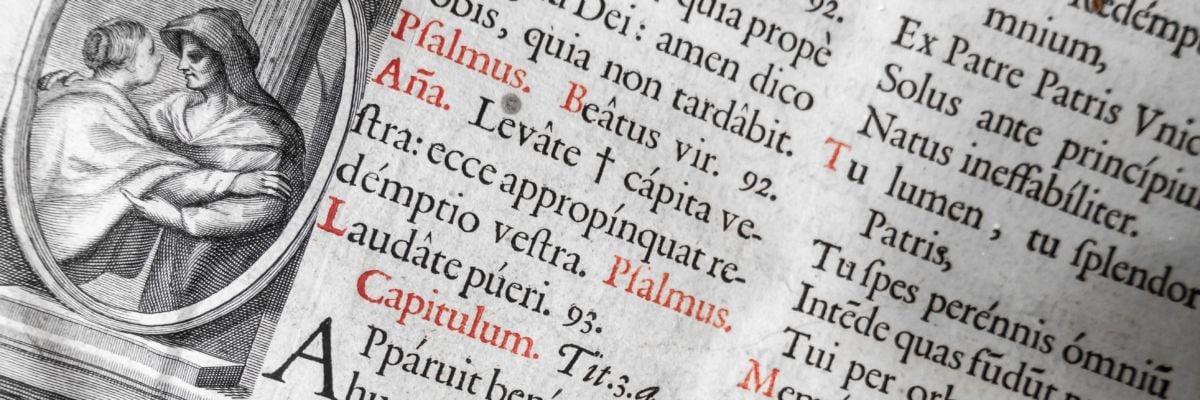
Cy Kellett welcomes Catholic apologist Jimmy Akin to discuss the history of the Latin Mass.
Transcript:
Caller: What’s a good way to explain why the Novus Ordo was introduced? How would you address critics of either the Novus Ordo or the Traditional Latin Mass? And both forms should be respected.
Jimmy: Okay, so what’s a good way to explain why the Novus Ordo was introduced? Let’s start there. The answer is that it was something. At least the seeds of this process were something that were called for by the Second Vatican Council. The liturgy had remained largely, though not entirely, stable for a number of centuries.
One of the things that had happened over the course of centuries is that various elements had gotten added to the liturgy. There was some feeling at the council that some of these elements were not really contributing that much to the experience of the liturgy itself and to the spiritual message of the liturgy. It would be better if we simplified it and took out some of these things that had been added over the centuries.
There was also a kind of fad in the 60s for early Christian liturgical expression. There had been a lot of new work done on, say, 4th-century liturgies, and there was a desire to kind of retrieve some of the things from earlier in Christian history that had been lost over time.
In the document *Sacrosanctum Concilium*, the council fathers called for a renewal of the liturgy. This was then entrusted to a commission which did some of the things that the council fathers requested, but it also went beyond what the council fathers requested.
Now, some of the things that they ended up doing, like, for example, the Second Vatican Council called for greater use of the vernacular languages in the celebration of the liturgy. Previously, in the Latin Rite of the Church, it had all been in Latin, and most people didn’t speak Latin anymore. There was a desire to encourage more use of the vernaculars, like English, Spanish, French, and German, and so forth.
But they didn’t want the whole thing in the vernacular. They specifically carved out certain things and said, like, we want people to be able to say or sing the common parts of the Mass that people say in Latin, so like they do now. They were calling for a partial translation into the vernaculars.
What happened was after the council, the Vatican commission got lots of requests for, “Can we do the whole thing in the vernacular?” Pope Paul VI ended up signing off on that. So, you know, they kind of changed course a little bit after the council.
The commission that was overseeing the revision of the liturgy also had its own ideas about things. One of these was what ended up giving us the four standard Eucharistic prayers that we have now. You know, there are other Eucharistic prayers as well, but four of them are kind of the main ones.
Number one is the original Roman Canon from the previous Rite of Mass. It’s really saint-heavy. It names all these male saints and it names all these female saints. In the pre-conciliar period, in the older form of the Latin Mass, this one Eucharistic prayer had bunches of options for variants that would be used at different points in the year.
Well, kind of the original idea was if we’re going to simplify the Mass and remove accretions that have been added to it over time, then you just simplify the Eucharistic prayer and make a simpler, streamlined version. But they didn’t. They basically left Eucharistic Prayer number one alone and didn’t really modify it. They added three more that are inspired by various other streams of Catholic tradition, like Eastern Catholic rites and so forth.
Even just one of them is like a brand new composition, basically. So they went a bit beyond what the Fathers of the Council had asked for. But Pope Paul VI, who’s now a saint, approved it all. There are reports that he wasn’t always happy with everything that he himself had approved, but he did approve it.
And so that’s how we got the so-called Novus Ordo, or New Order of Mass.
That’s the first question.
The second question was how would you address critics of either the Novus Ordo or the Traditional Latin Mass, that both forms should be respected?
Well, for critics of the Traditional Latin Mass, I would say this was the Church’s liturgy for hundreds of years. You shouldn’t be dissing this. You know, this was the core of Catholic life and spirituality for hundreds of years. Even if you think it could be improved by some of what was done more recently, it’s still a holy and good thing in and of itself, and you shouldn’t be hostile towards it.
If some people prefer it, you should respect those people and their liturgical sentiments. So that’s what I’d say to critics of the Traditional Latin Mass. I think it needs to be respected, and it’s a holy and good thing that should be respected.
When it comes to critics of the Novus Ordo, I would say now in both of these discussions, we could get into the weeds of the specific details of the two rites, but I’m trying to keep this at a higher level here.
If someone’s criticizing the Novus Ordo, I would say read it. There’s nothing in there that’s harmful. There’s nothing in there that’s bad. Some people have different liturgical sensibilities. They want to hear the liturgy in their native language. They don’t have a problem with these prayers and the sometimes simplified way that they’re done.
Just because this is a different expression doesn’t mean it’s bad. The Church already has lots of different expressions of the liturgy. It doesn’t all have to be the Traditional Latin Mass. We have the Eastern rites of the Catholic Church that have their own liturgical traditions.
In the West, we have multiple versions of the Latin Rite, like, for example, the Ambrosian Rite that’s used in Milan, or the Sarum Rite that was used in England, or the Anglican Use that’s used today by those who have a connection with Anglican heritage. All of these are variants of the Latin Rite itself.
So it’s not like there has to be rigid uniformity. That’s never been the case. The Church has always had liturgical diversity. If some people appreciate the Novus Ordo version of the liturgy, which is valid and matches their preferences, well, then, you know, that’s fine. They should be respected, and the Novus Ordo should be respected, too.
Cy: Jordan, thank you. I’m going to move on and try to get some more questions on before we have to go. And Veronica wanted to know this.



